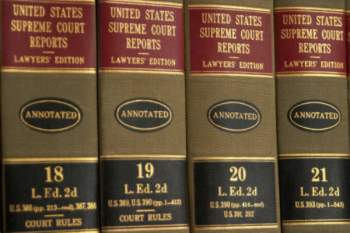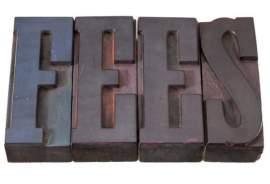
Your Guide to The Digital Millennium Copyright Act of 1998

Must Read
Know The Digital Millennium Copyright Act of 1998 Criticisms
The Digital Millennium Copyright Act of 1998 Online Copyright Infringement Liability Limitation Act
The Digital Millennium Copyright Act of 1998 Overview
The Digital Millennium Copyright Act of 1998: Anti Circumvention Exemptions
Popular In Copyright
Copyright Infringements Copyright Law What Is Copyright Legal Consequences Of Plagiarism Copyright Free Image Florida Prepaid Postsecondary Education Expense Board V College Savings Bank Famous Cases Of Copyright Law Copyright A Book Library Of Congress Copyright Copyright Laws For Motion Pictures Copyright Infringement Punishment Copyright Symbol
There have been many and various types of copyright acts amended or modified to the original and first Copyright Act of the United States, the Copyright Act of 1790. One of the main reasons for such provisions is simply the fact that technology and science have advanced tremendously since the first copyright law's inception, and unfortunately, has also offered an avenue for piracy and copyright infringement.
With the seemingly infinite amount of information and material available on the internet, it seemed only a matter a time until illegal activity would be found to proliferate with its use, with copyright infringement being one of the key occurrences. Therefore, the 105th United States Congress made a motion to implement legislation to curtail and limit the amount of piracy and copyright infringement on the internet, which also included other various electronic sources and technological advancements. The Digital Millennium Copyright Act of 1998 would become the Copyright Act whose mission was to put an end to such criminal actions.
The Digital Millennium Copyright Act would implement into United States law two treaties as provided under the World Intellectual Property Organization, or WIPO. These two treaties would be known as the WIPO Copyright Treaty and the WIPO Performances and Phonograms Treaty. Furthermore, the Digital Millennium Copyright Act, or DMCA, would also implement its own copyright-related provisions in the new United States legislation.
The Digital Millennium Copyright Act is divided into five subsections, each
detailing specific restrictions or regulations for copyright infringement and
anti-piracy control. The first sections essentially address the two treaties
originally drafted by the WIPO. The first issued addressed is that the United
States will comply with the WIPO treaties and their respective provisions.
Firstly, the United States must recognize the copyrighted works or materials of
foreign countries, as well as those works that have been made
available--legally or illegally--in the U.S. but not yet in their original
country of origin.
Secondly, the U.S. would recognize all foreign copyrighted work, even though those may have not been registered with the United States Copyright Office. This provision was important because of the fact that the U.S. will not allow for lawsuits of copyright infringement to be made if the work is not properly registered with the the Copyright Office once the work is published or distributed commercially. This allowed for the owners of copyrighted works or materials of foreign countries to bring infringement suits, even if not registered under United States legislation.
The third and last WIPO provision adopted by the DMCA deals with the technology, services, or electronic devices used to circumvent measures to obtain access to copyrighted material. Employing such measures would be considered unlawful and prosecutable under criminal law in the United States. This provision also extended to include the use of circumvention of technological protection measures to gain access, regardless of whether or not copyright infringement is committed. The action itself of bypassing control measures would be considered illicit.
It also includes a provision for maintaining illegal the action of copying a copyrighted work without the original copyright owner's consent, regardless of the measures employed to gain access to the work itself. An exemption to this provision includes the copying of a work for legitimate purposes. In other words, under certain circumstances, the bypassing of technological protection measures may be allowed to make a copy of the work for legal purposes, but not in the case of circumventing for illegal purposes or without the consent of the copyright owner. This provision also includes the manufacturing, production, distribution, or marketing of any device, program, or software that is meant for the illegal bypassing of protection measures.
There are exceptions allowed by the Digital
Millennium Copyright Act for the use of bypassing technology measures, as well
their respective devices or software. These exemptions include:
Use by/for Law Enforcement purposes
Non profit libraries and educational institutions
The exceptions are made with the condition that these institutions may circumvent protection measures only to review a certain work for inclusion for legal use at a later time, with the intentions of legal acquisition.
Reverse engineering
The exemption is made for the bypassing of technological measures for the purpose of research and scientific study by an authorized individual for the analysis of computer programs and their possible compatibility with other existing programs, as long as such action coincides under other copyright acts and laws.
Encryption research
In order to verify and account for possible flaws in the actual technological means implemented to prevent illegal access to copyrighted material and other encryption technology, as approved by law.
Protection of minors
Personal privacy
The circumvention is allowed when such technology may collect personal information of a user regarding online activities without the user's permission.
Security testing of computers
The second section of the Digital Millennium Copyright Act refers to an
internet service provider's plausible liability for copyright infringement or
piracy committed by its users. It states that ISPs are responsible for the actions
of their user's and cannot be held liable, as long as certain implementations
are applied by the ISP. This includes informing their users by instituting a
policy which makes it clear that copyright infringement is illegal and that
using their service for such purposes will lead to the cancellation of the
service, as well as applicable punishment by law.
A copyright holder may seek to subpoena an
ISP in order to provide information regarding particular users responsible or guilty of copyright infringement.
Furthermore, ISPs must also be considered as enacting one of the following as
part of their service to not be considered liable:
Transitory communications
System caching
Storage of information on networks or systems
Information location tools
The third section simply states that individuals may make copies of copyrighted
material or programs on computers for the purpose of repair or maintenance.
Once the repairs are done, such copies must be destroyed immediately. Such
computer programs must have been lawfully installed in the computer as a condition of this provision.
The fourth section deals with miscellaneous provisions as the use of ephemeral copies for broadcast purposes, such as making a copy of music onto a hard drive for convenience and programming purposes. Other examples include distance education, library copies of phonorecords, webcasting issues, and motion picture agreements between producers and compensation of actors, writers, and/or directors. The fifth provision deals with the use and protection of original designs as "useful articles" and refers to hulls of vessels no longer than 200 feet.
NEXT: Educational Fair Use Section 107




















